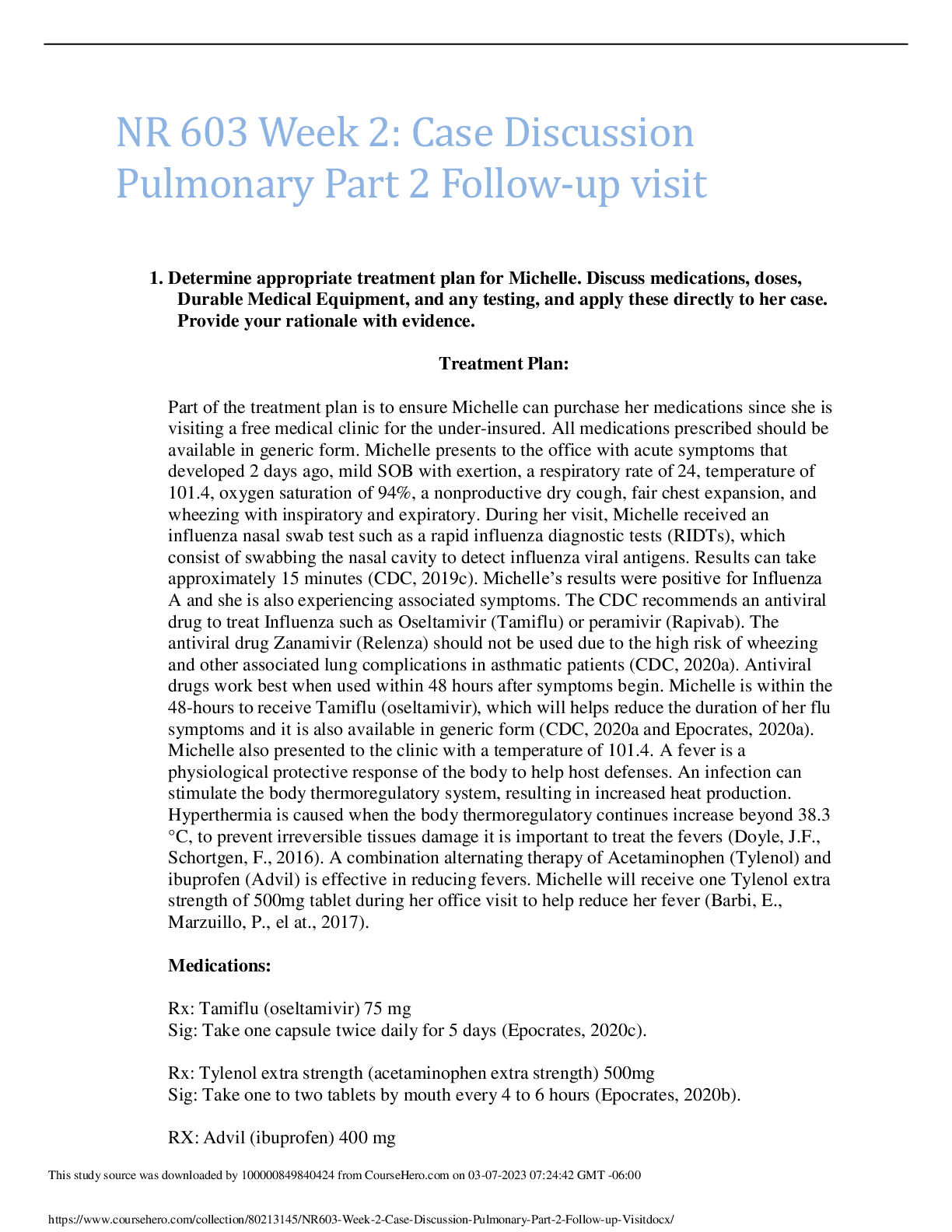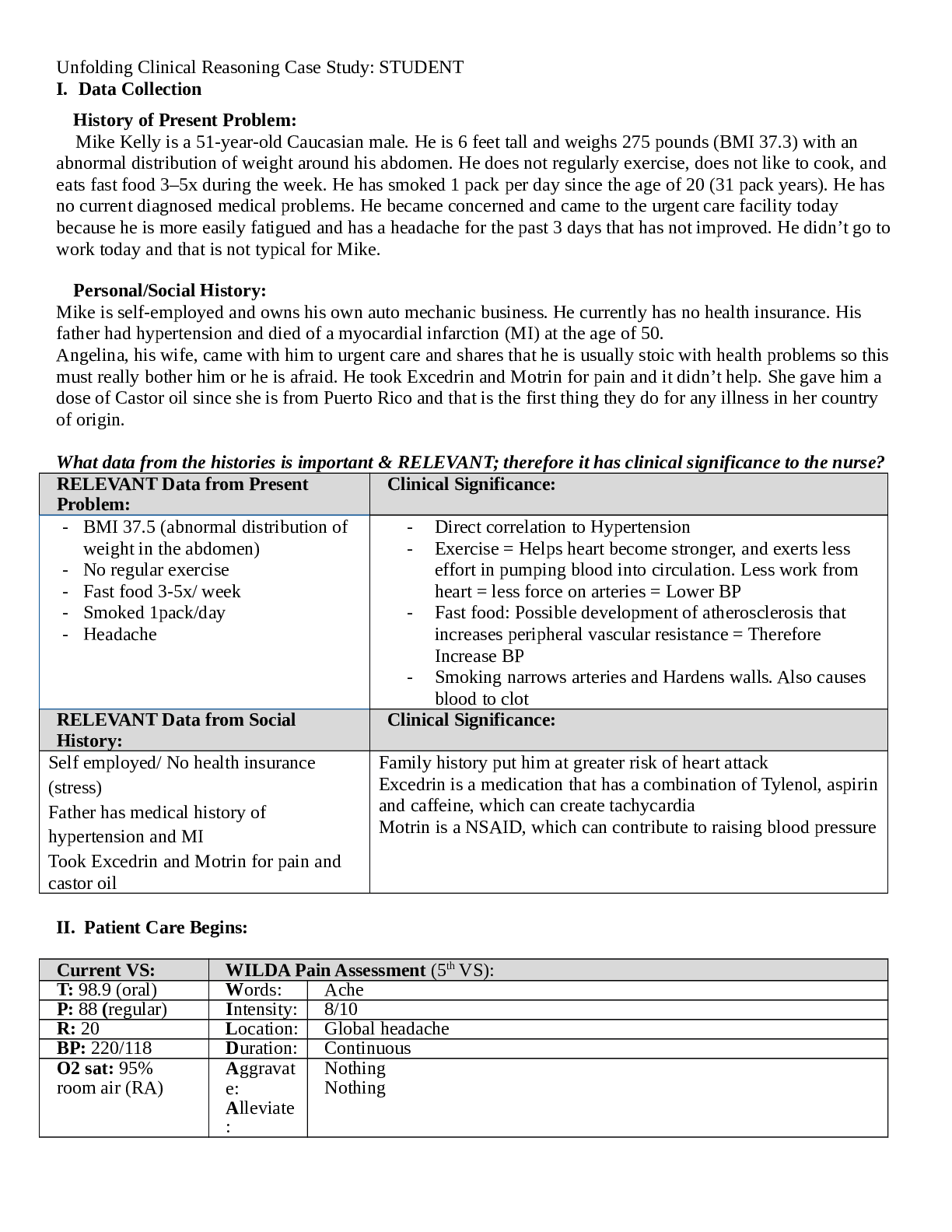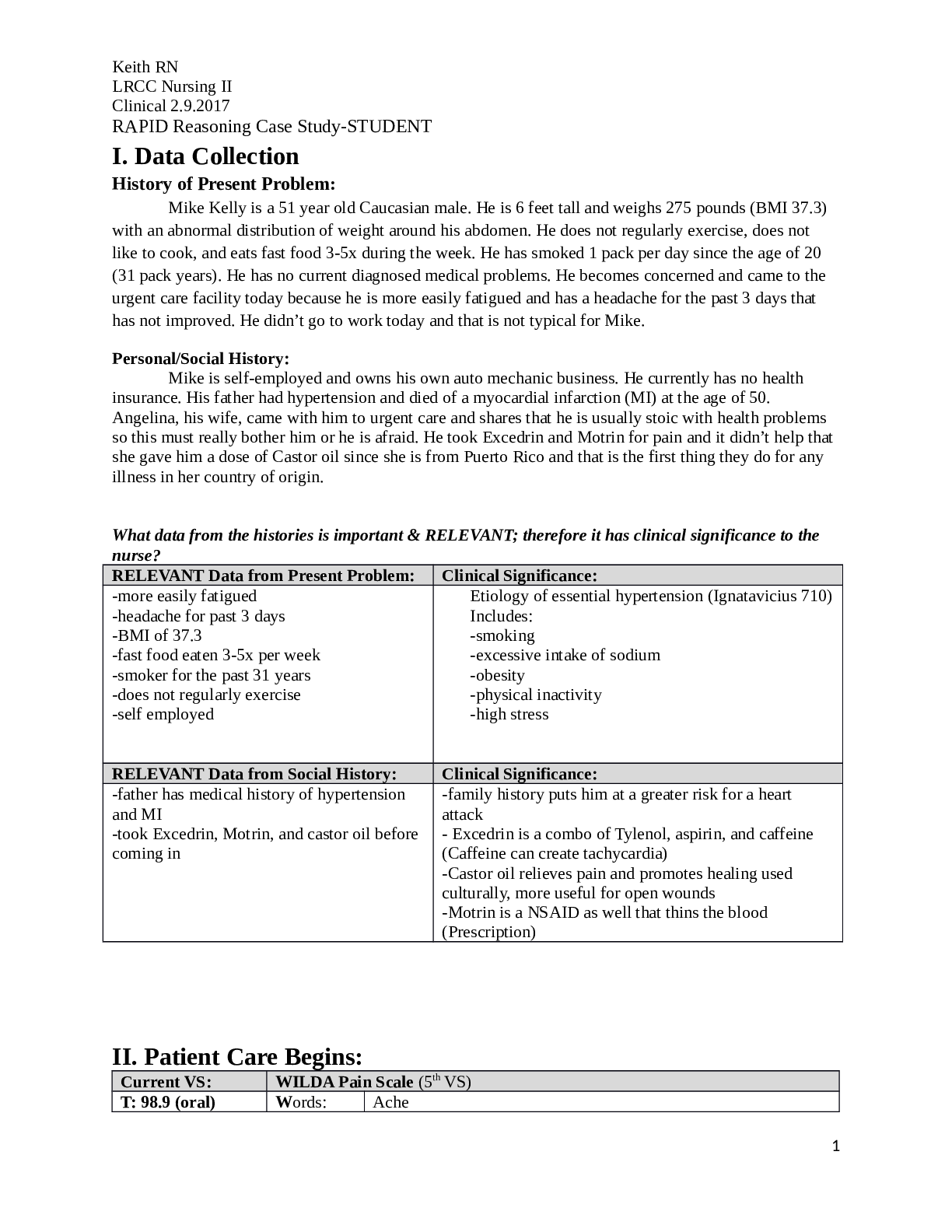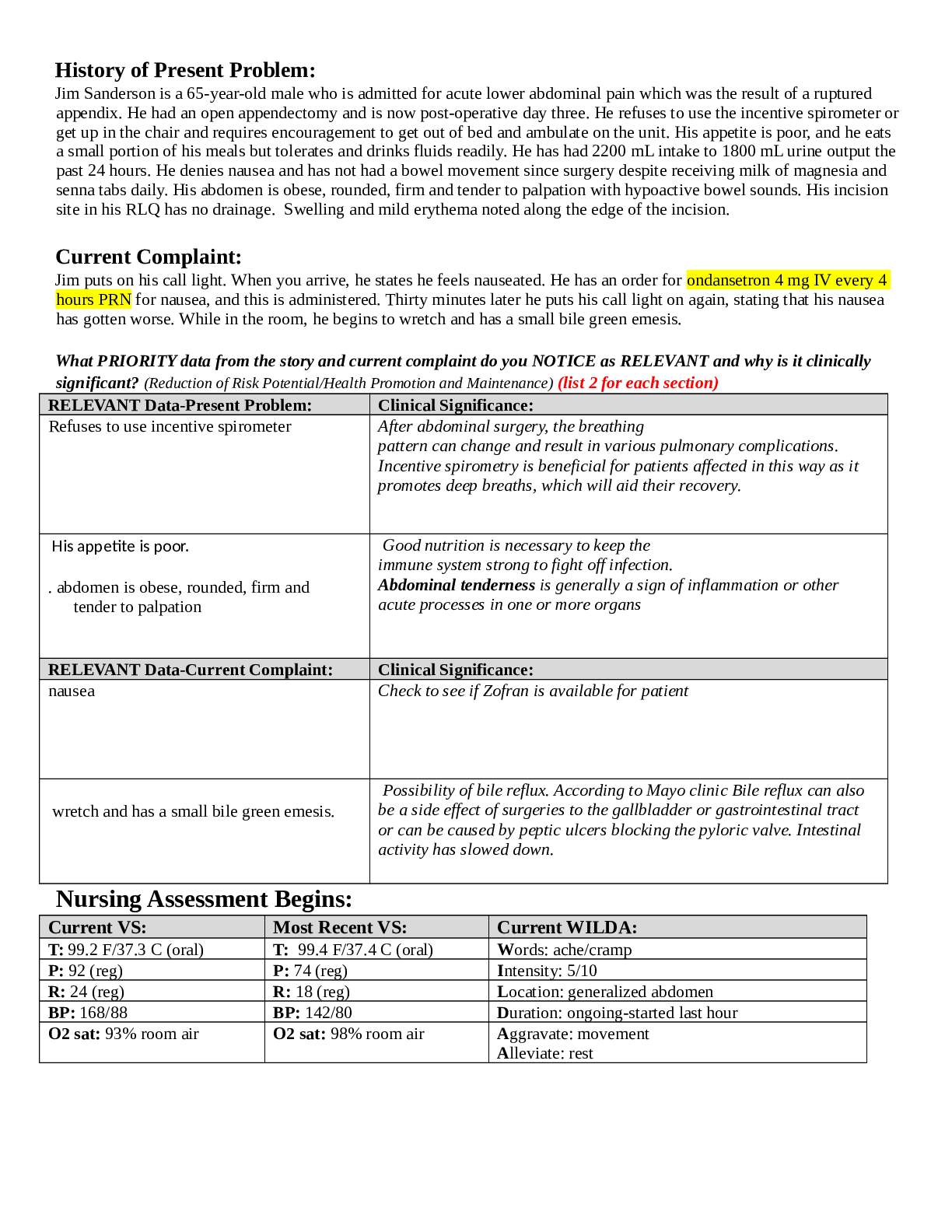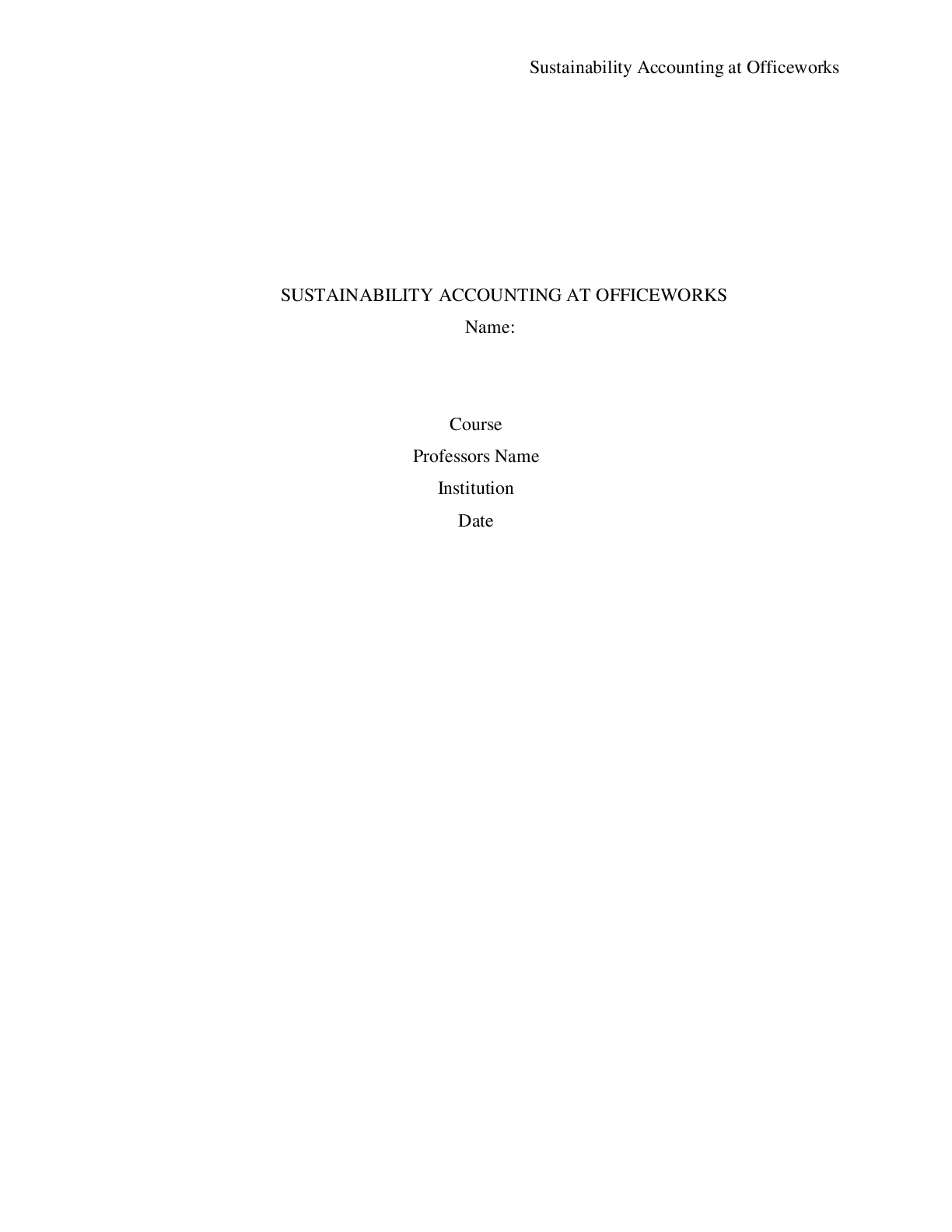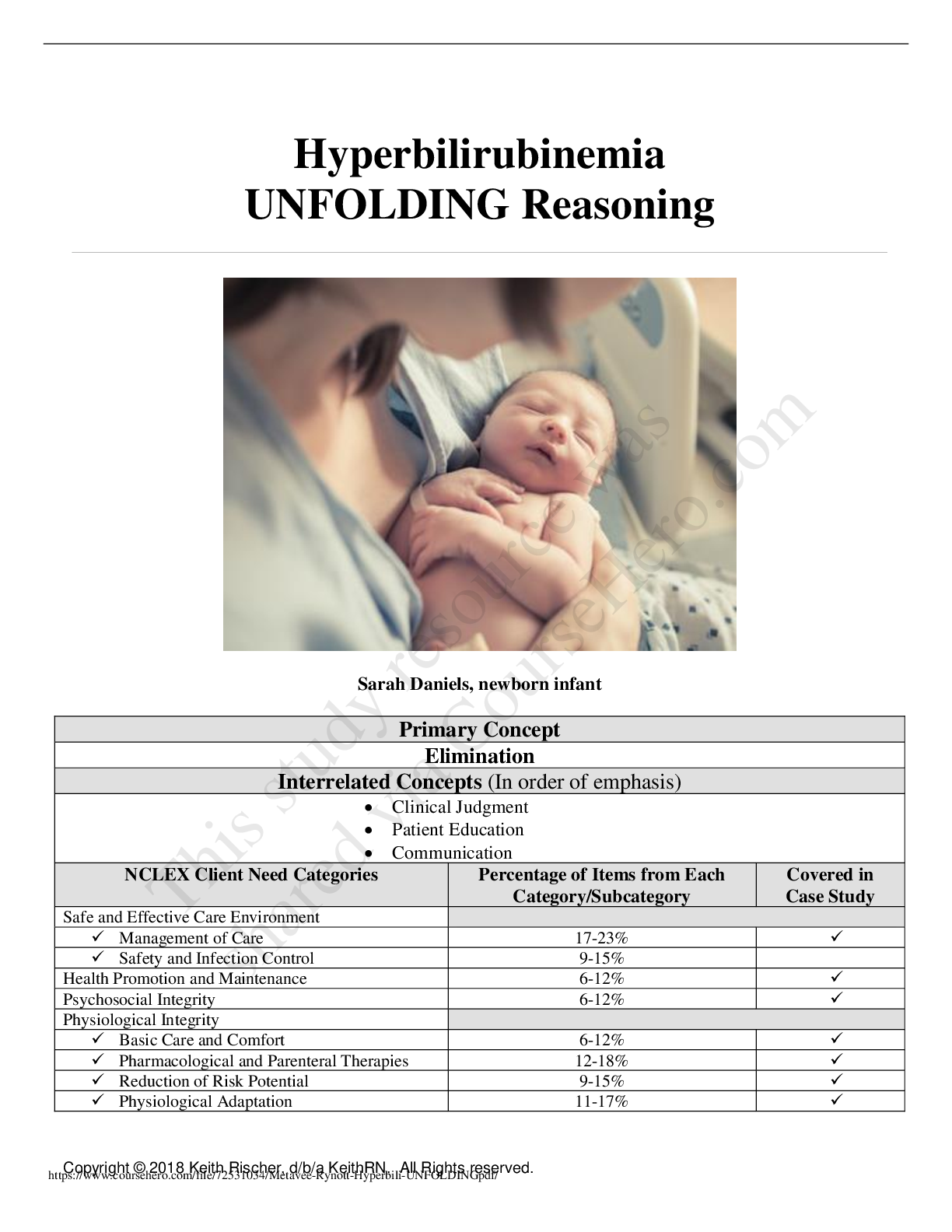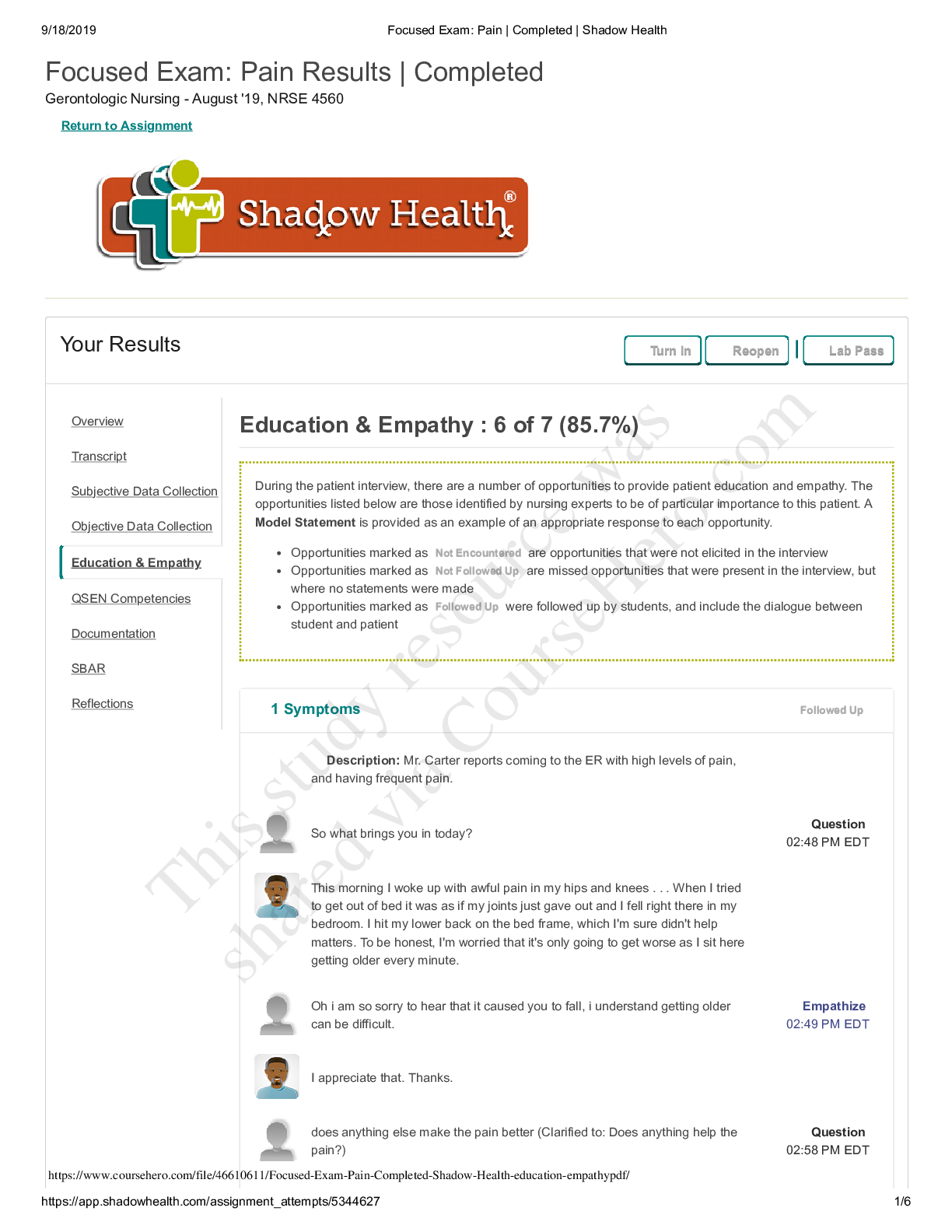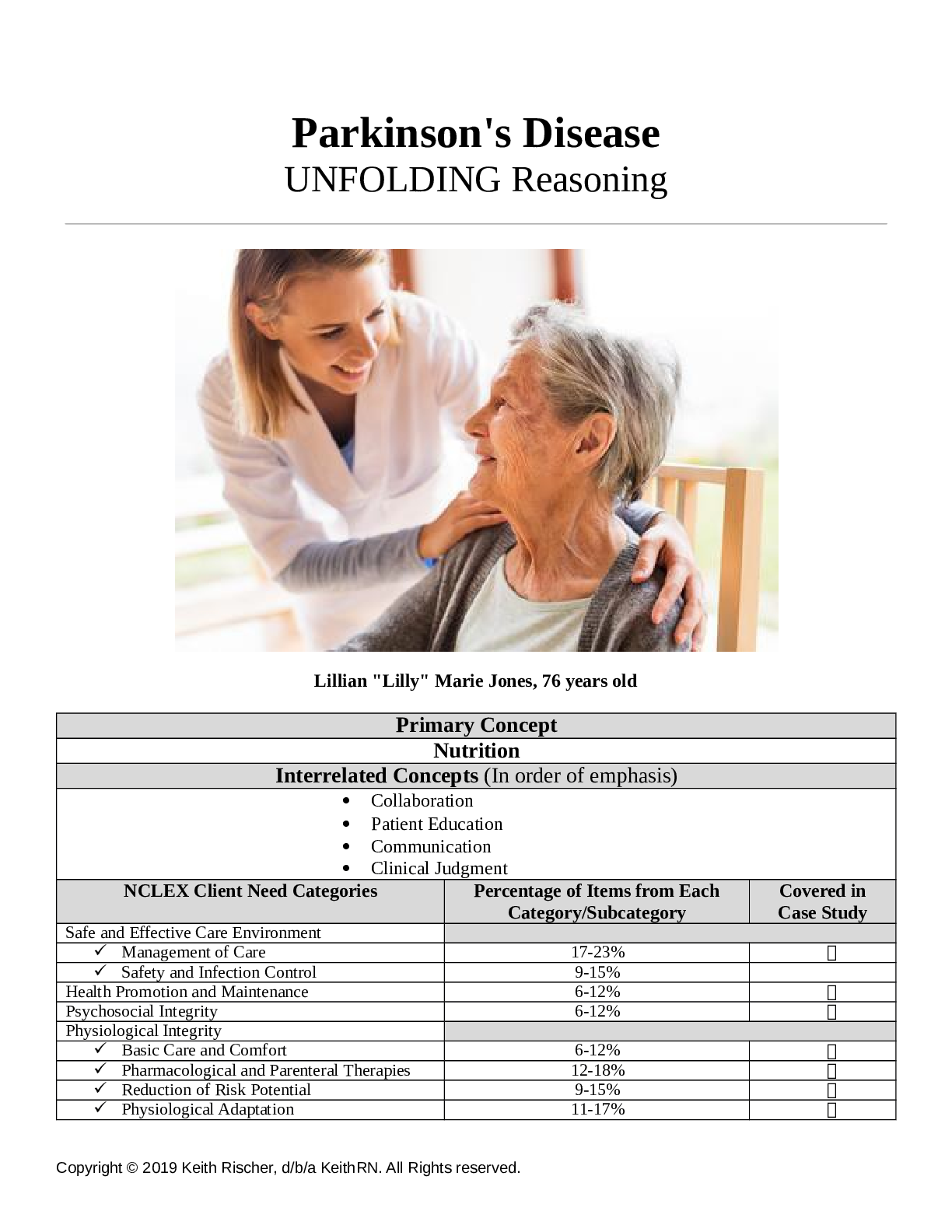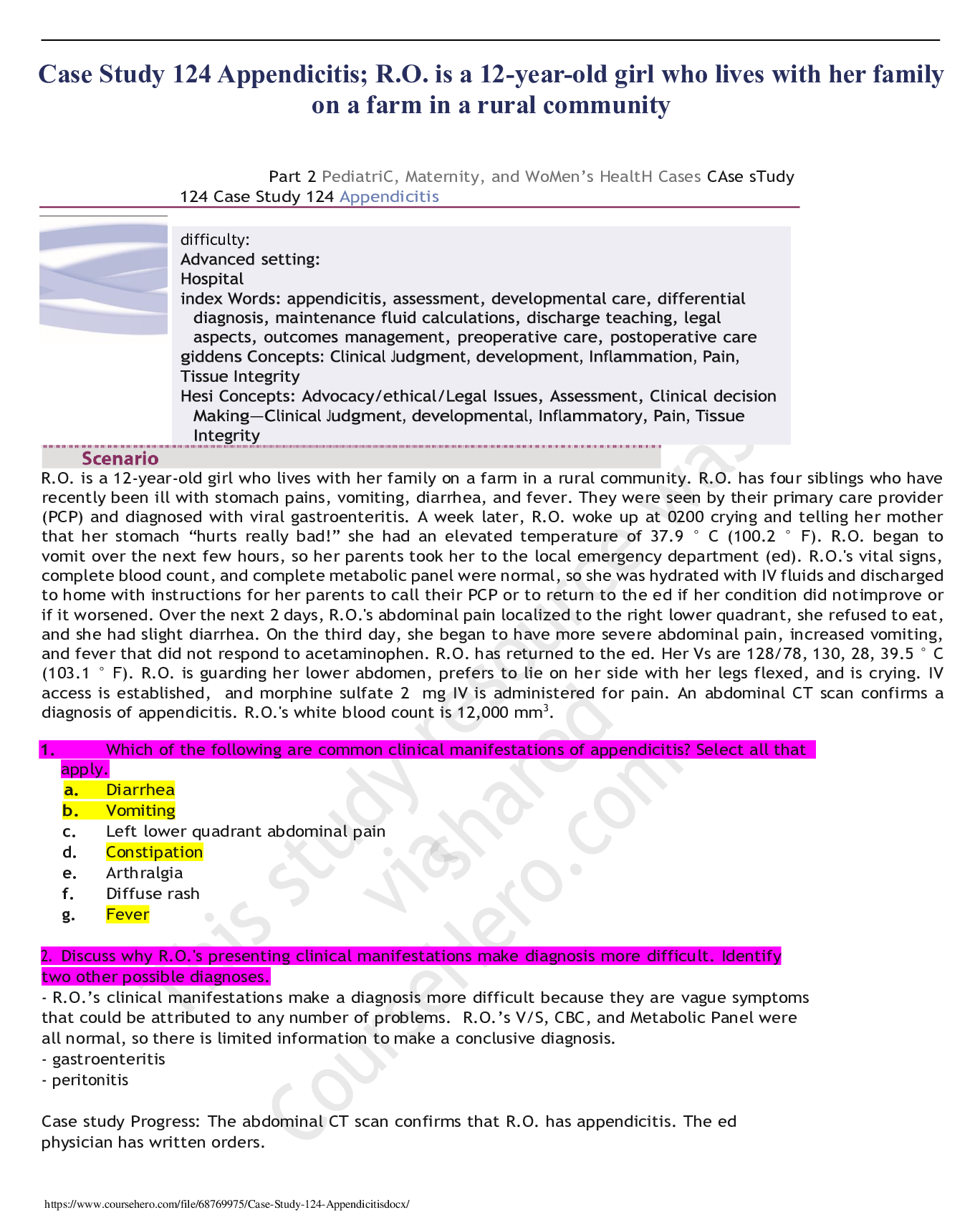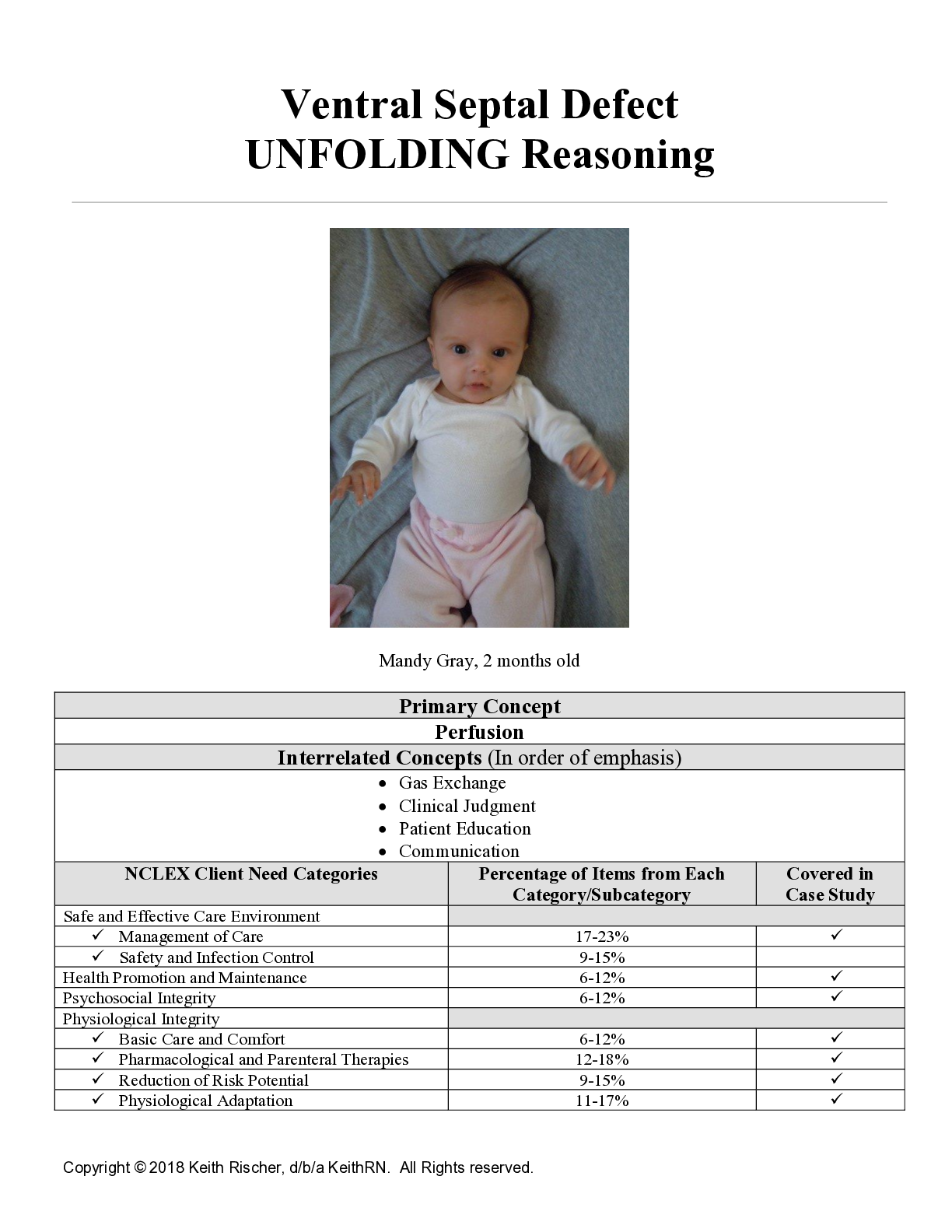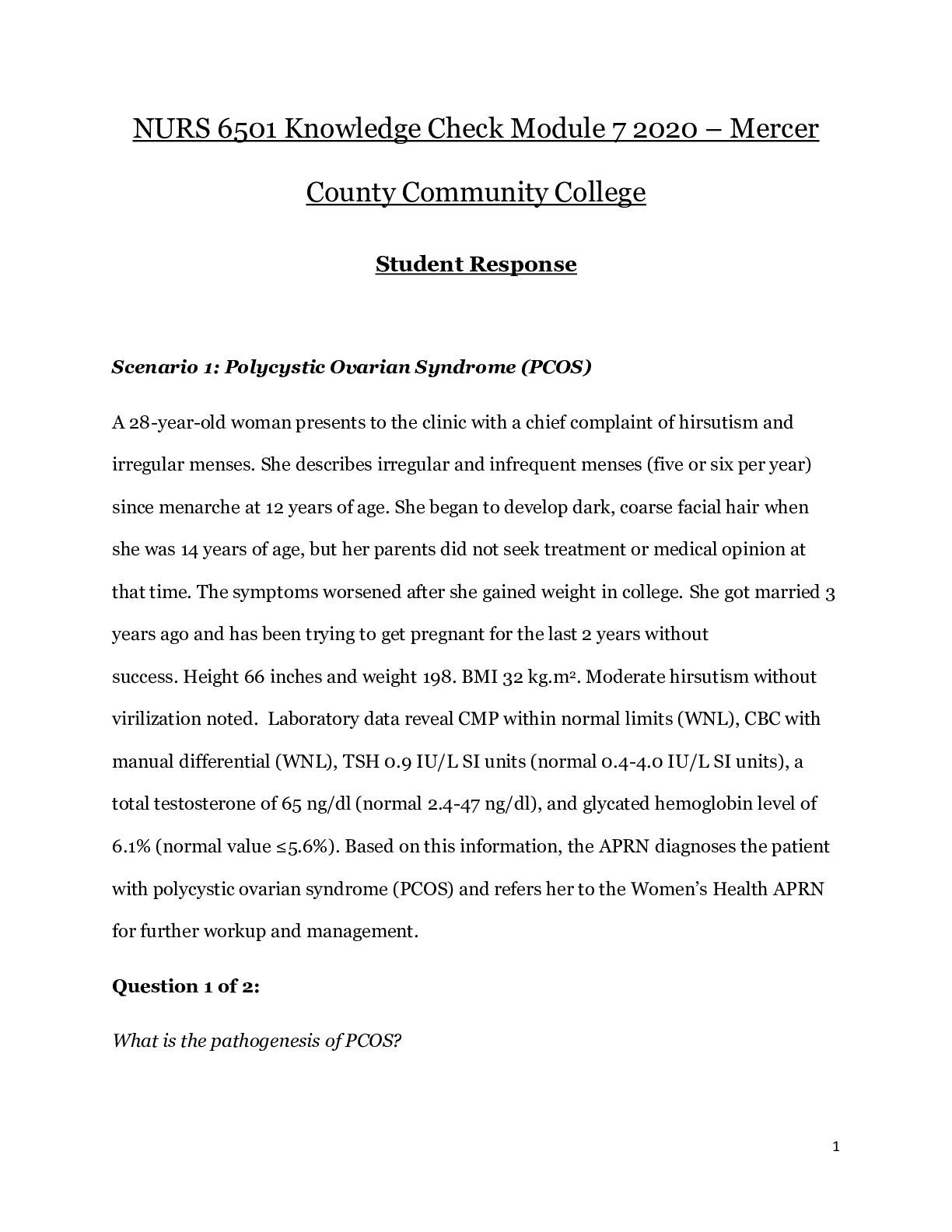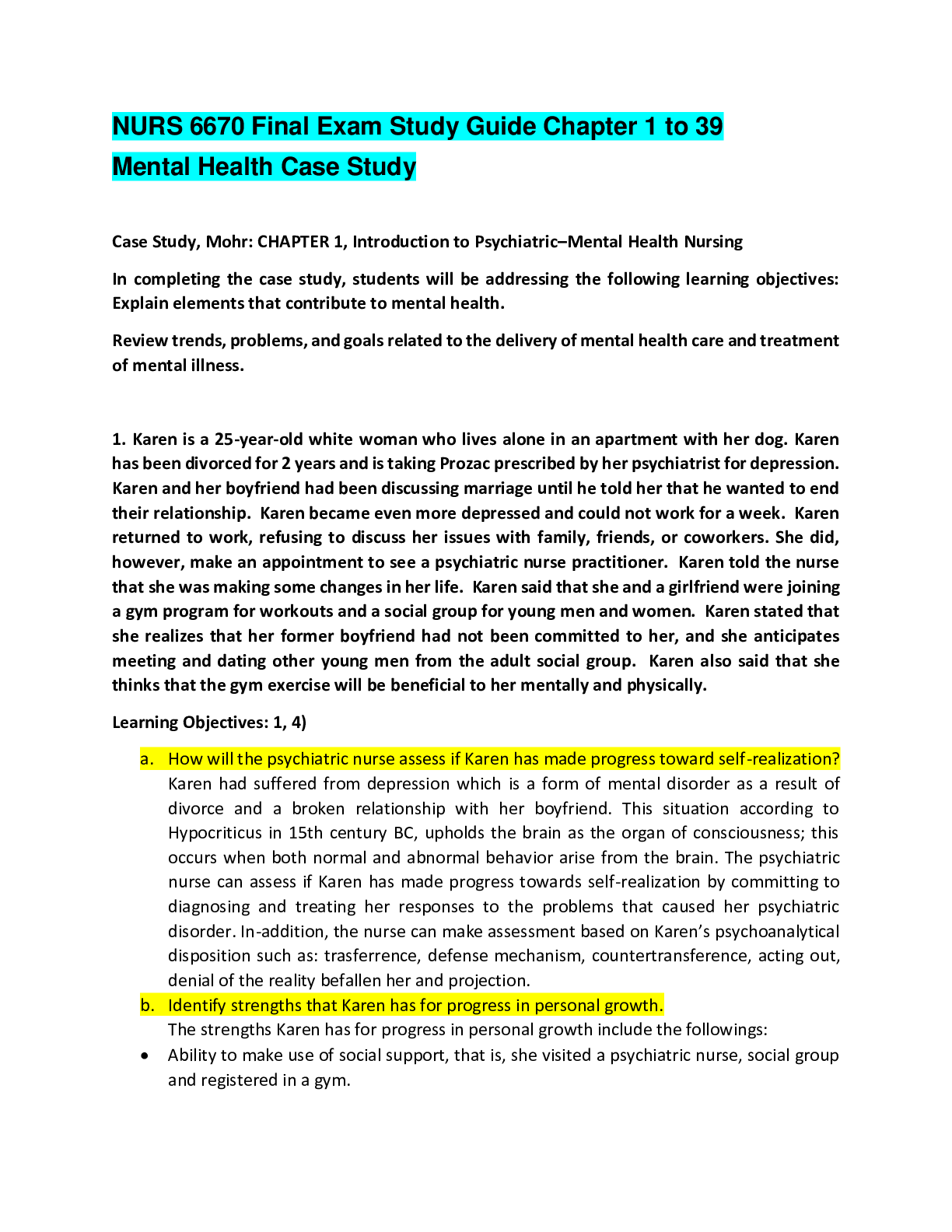Health Care > CASE STUDY > Week 8: Study Guide Forum: Global Developmental Delay Jaydel Rayne (All)
Week 8: Study Guide Forum: Global Developmental Delay Jaydel Rayne
Document Content and Description Below
Assignment: Study Guide Forum: Global Developmental Delay Global developmental delay (GDD) is considered a delay in the cognitive and physical development of children. The term is specifically utili... zed to explain developmental delays among children aged five years and below, where physicians identify them during routine checks or after a parent raises concerns. Children with GDD tend to take a longer time developing new skills than other children of the same age. While developmental delays are known to affect various aspects of children’s development, GDD affects most or all areas of children’s development, thus interfering with their cognitive functionality and adaptive behavior development. Establishing a diagnosis allows clinicians to choose the most appropriate treatment approaches, undertake surveillance for known complications, in addition to offering prognosis and family support. Signs and Symptoms of GDD According to the DSM-5 GDD is termed as a delay in some of the developmental domains of children. The DSM-5 criteria explain GDD as a diagnosis set aside for children aged below five years, who tend to exhibit a delay in at least two of the five developmental areas that include motor skills, cognitive skills, speech, social, as well as emotional development (Belanger & Caron, 2018). The delay in the five areas of children’s development are manifested by symptoms that include: Delay in sitting up, crawling, and walking Gross motor difficulties Communication problems Limited reasoning Aggressive behavior as one of the coping skills 3 Poor social skills and judgment Differential Diagnoses GDD tends to be misdiagnosed as other illnesses that include: (1) Autism Spectrum Disorder (ASD): This is a neurodevelopmental condition where children experience a delay in language and social development. According to Sokolova et al. (2017), ASD is manifested by repetitive behavior, restricted communication, and impairment in interaction. However, children with GDD have more developmental problems than those with ASD. (2) Cerebral Palsy: This form of developmental condition is manifested by motor deficit, which is accompanied by abnormal posture, poor cognition, and communication, as well as abnormal movement (Jan, B. & Jan, M., 2016). However, cerebral palsy has no time limit, as adults still suffer from it. (3) Leukoencephalopathy: This is a brain disorder that affects the white matter of the brain, with symptoms that include cognitive impairment, ataxia, movement disorder, as well as upper motor neuron signs (Lynch et al., 2019). The effect on the white matter leads to interference with the normal functioning of the child’s central nervous system. However, children with leukoencephalopathy may be experiencing normal growth but functioning abnormally. 4 Incidence GDD is normally diagnosed in children aged five years and below, where it affects 1%- 3% of children of this age bracket (Mithyantha et al., 2017). This implies that GDD is among the most common illnesses presented in a pediatric clinic. In the U.S., one in every six children is diagnosed with one or more developmental conditions and delays. Development and Course Most developmental problems happen before the birth of a child, even though other multiple causes may be involved in the development of GDD. According to Choo et al. (2019), the four major categories of the causes are prenatal, perinatal, postnatal, as well as other causes. Table 1 below explains the common etiologies of GDD. Prenatal: Genetic disorders: Such as Down syndrome, chromosomal microdeletion, or duplication Cerebral dysgenesis: microcephaly, hydrocephalus, absent corpus callosum Vascular: occlusion, hemorrhage Drugs: cytotoxic, anti-epileptic Toxins: alcohol, smoking Early maternal infections: rubella, toxoplasmosis, cytomegalovirus Late maternal infections: HIV, varicella, malaria Perinatal: Prematurity, intrauterine growth retardation, periventricular leucomalacia, intraventricular hemorrhage Perinatal asphyxia: hypoxic-ischemic encephalopathy Metabolic: symptomatic hypoglycemia, bilirubin-induced neurological dysfunction 5 Postnatal: Infections: meningitis, encephalitis Metabolic: hypernatremia, hyponatremia, dehydration, hypoglycemia Anoxia: suffocation, near-drowning, seizure Trauma: accidental or non-accidental head injury Vascular: stroke Other Causes: Social: severe under-stimulation, maltreatment, malnutrition (i.e. deficiency of vitamin D, iron, and folate) Maternal mental disorder Unknown causes Table 1: Common etiologies of GDD [Choo et al., 2019] The Comprehensive clinical assessment has contributed toward the plan of investigating young children who present symptoms of GDD. The investigations take the course of a flowchart and decision-making trees, as shown in Figure 1 below. [Show More]
Last updated: 1 year ago
Preview 1 out of 11 pages
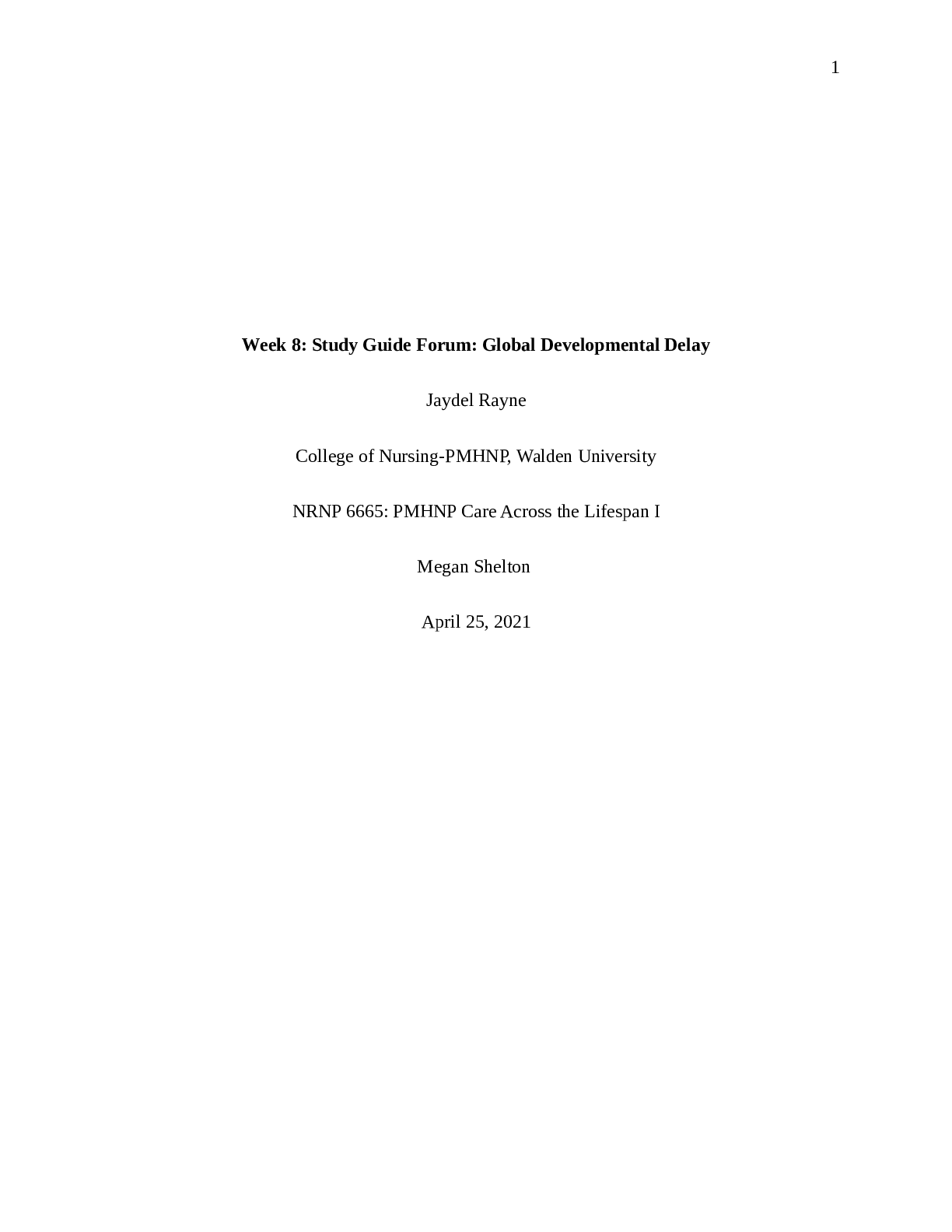
Reviews( 0 )
Document information
Connected school, study & course
About the document
Uploaded On
May 12, 2022
Number of pages
11
Written in
Additional information
This document has been written for:
Uploaded
May 12, 2022
Downloads
0
Views
28

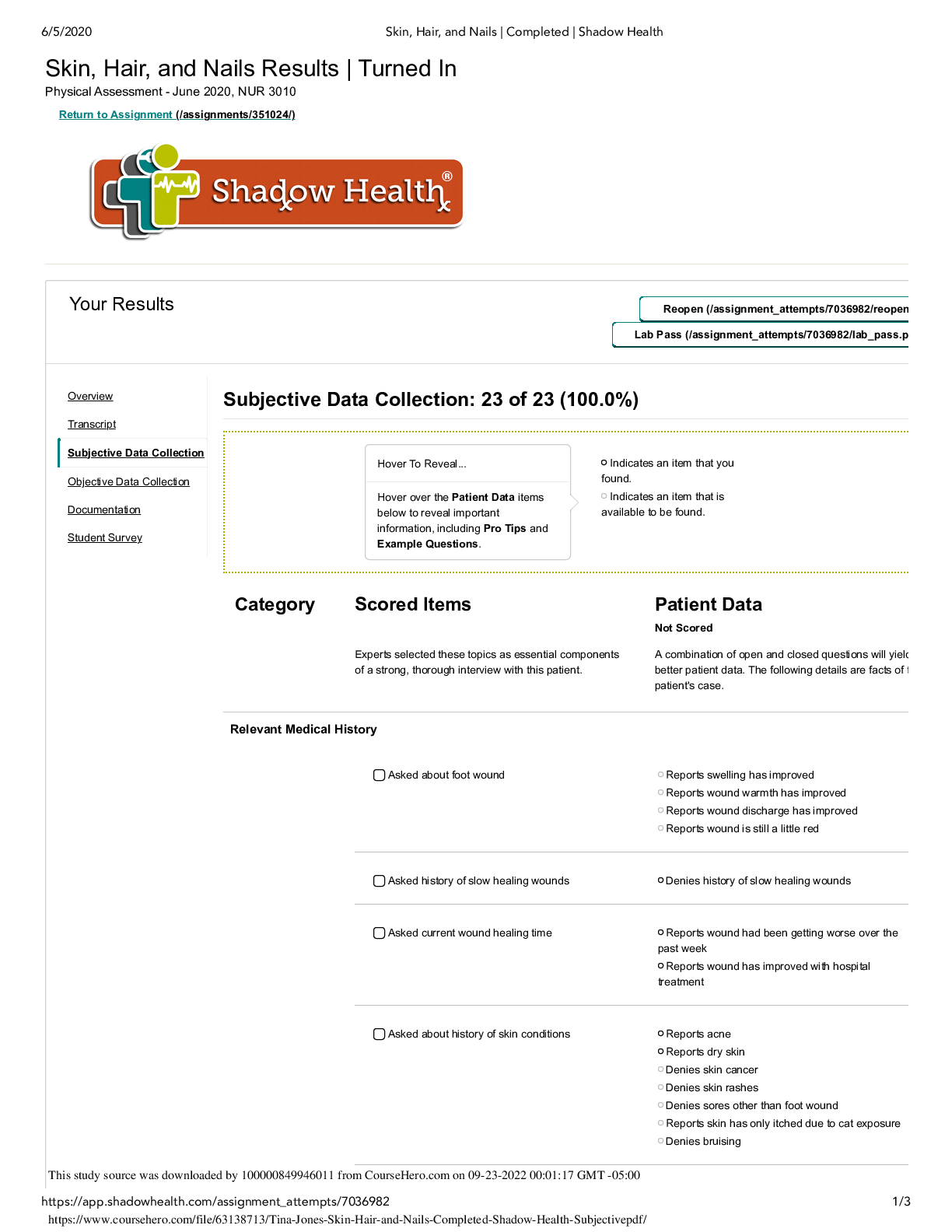
 (1).png)



